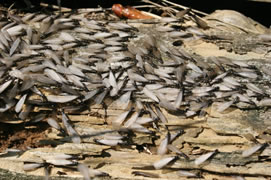 |
| Newly-emerged termite swarm |
Photo © iStockphoto/Peggy Easterly |
Subterranean Termite (Swarmers)
-
Scientific Name:
- Reticulitermes flavipes (eastern subterranean termite) Reticulitermes hesperus (western subterranean termite)
-
Family:
- Rhinotermitidae
-
Order:
- Isoptera (termites)
-
U.S. Distribution:
- Eastern subterranean termite occurs in eastern and central U.S. from the Canadian border south to Florida and west to Texas. Western subterranean termite occurs in the western U.S. from the British Columbia border south to Mexico and east to Idaho and Nevada.
This page has three tables, (1) Identification, (2) Look-alike Pests, and (3) Biology and Habits.
Identification
| Match the Shape and Size | Match the Color |
|---|---|
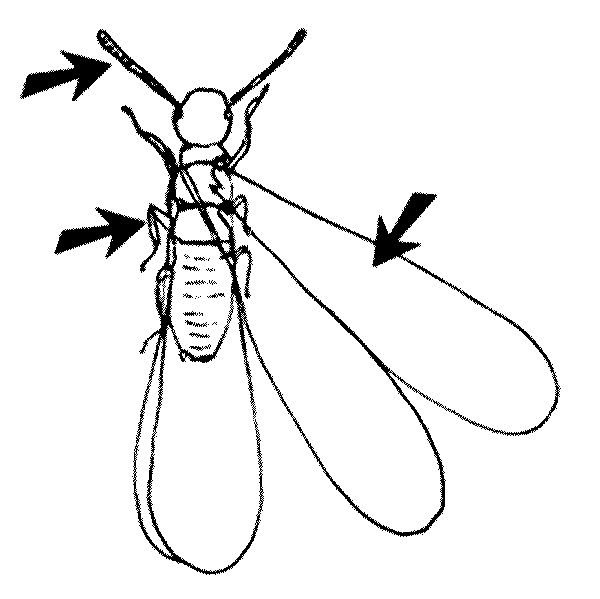 |
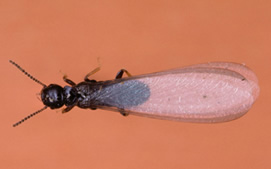 |
|
|
| Illustration © Pinto & Associates | Photo Louisiana State University |
Look-alike Pests
| Look-alike Pest | Differences |
|---|---|
Formosan termite (Coptotermes formosanus) |
Wings covered with fine hairs; color pale yellow to yellow-brown; larger--1/2-inch long |
Drywood termite (Cryptotermes spp. and Incisitermes spp.) |
Front wings with 3 or more pigmented veins |
Biology and Habits
| Match the Food and Site | Match the Habits and Damage |
|---|---|
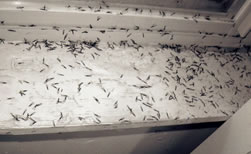 |
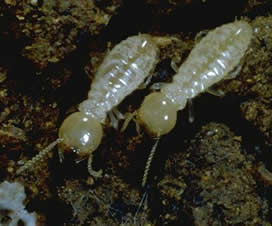 |
|
|
| Photo © Pinto & Associates | Photo by Phil Sloderbeck @ KSU |